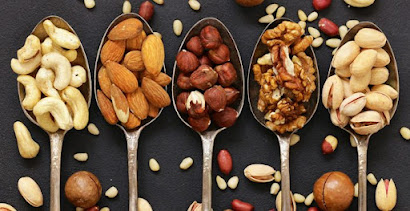Navigating Dry Fruits with Diabetes: What to Avoid and Why
Effectively managing diabetes involves meticulous attention to diet and nutrition. Dry fruits, often perceived as a healthy snack choice, present challenges due to their concentrated sugar content. For individuals living with diabetes, it's essential to be discerning about which dry fruits to include in their diet to prevent spikes in blood sugar levels. In this comprehensive guide, we'll delve into dry fruits that diabetics should steer clear of, shedding light on their glycemic impact and offering practical tips for making informed dietary decisions.
Understanding the Risks:
Before delving into specific dry fruits to avoid, it's crucial to grasp why caution is necessary for individuals with diabetes when consuming dried fruits. Dry fruits are essentially dehydrated versions of fresh fruits, resulting in a higher concentration of sugars and calories per serving. This elevated sugar content can lead to rapid spikes in blood glucose levels, which can be problematic for diabetes management. Consequently, individuals with diabetes must be mindful of their consumption of dried fruits and prioritize options with lower glycemic impact.
Raisins: A Sweet Culprit
Raisins, often praised for their natural sweetness and convenience, are among the dry fruits that diabetics should approach cautiously. Despite their small size, raisins contain concentrated sugars, primarily fructose. With a glycemic index ranging from 64 to 100, raisins have the potential to cause significant spikes in blood sugar levels, making them less suitable for individuals with diabetes.
Opt for Fresh Fruit Alternatives
Instead of raisins, consider incorporating fresh fruits with lower glycemic impact into your diet, such as berries, cherries, or apples. These alternatives offer natural sweetness and valuable nutrients without the concentrated sugar content of dried fruits.
Dates: Nature’s Candy
Dates, valued for their natural sweetness and rich flavor, are another dry fruit that diabetics should consume sparingly. Despite their nutritional benefits, including fiber and essential minerals, dates have a high glycemic index, typically ranging from 46 to 75 or more. This high glycemic load can lead to rapid spikes in blood glucose levels, undermining efforts to maintain stable blood sugar control.
While dates can be enjoyed in moderation as part of a balanced diet, it's crucial to be mindful of portion sizes and overall carbohydrate intake. Consider pairing dates with protein or healthy fats to mitigate their glycemic impact and promote satiety.
Dried Pineapple: Proceed with Caution
Dried pineapple, with its tropical sweetness and chewy texture, may seem like a tempting snack option. However, diabetics should exercise caution when consuming dried pineapple due to its potential impact on blood sugar levels. Similar to dried mango, dried pineapple often contains added sugars, further increasing its carbohydrate content and glycemic impact.
Choose Whole, Unsweetened Options
When craving the flavor of pineapple, opt for fresh pineapple or unsweetened frozen pineapple chunks. These alternatives provide the delicious taste of pineapple without the added sugars found in dried varieties. Additionally, incorporating pineapple into savory dishes or salads can add a burst of flavor without compromising blood sugar control.
Dried Mango: A Tempting Treat
Dried mangoes, with their vibrant color and sweet taste, may be a favorite indulgence for many. However, individuals with diabetes should approach dried mangoes with caution due to their potential impact on blood glucose levels. Like other dried fruits, dried mangoes often contain added sugars to enhance their sweetness, contributing to higher carbohydrate content and glycemic load.
If you choose to enjoy dried mangoes occasionally, practice portion control to manage their glycemic impact effectively. Consider pre-portioning dried mangoes into small servings to avoid overconsumption and pair them with protein or healthy fats to balance their effects on blood sugar levels.
Sweetened Cranberries:
Commercially sweetened cranberries, often marketed as a healthy snack or ingredient, can pose challenges for individuals with diabetes due to their added sugars. While cranberries themselves are tart and low in natural sugars, sweetened cranberries are typically infused with sugar or syrup to enhance their flavor, leading to higher carbohydrate content and glycemic impact.
When incorporating cranberries into your diet, choose unsweetened options to minimize added sugars and reduce their impact on blood sugar levels. Look for dried cranberries sweetened with natural fruit juices or enjoy fresh cranberries as a lower-carb alternative.
Navigating Dry Fruits with Diabetes:
In addition to avoiding high-sugar dry fruits, individuals with diabetes can adopt several strategies to make informed dietary choices and manage their blood sugar effectively:
1. Read Labels Carefully: When purchasing dried fruits, scrutinize labels for added sugars, preservatives, and other undesirable ingredients. Choose products with minimal added sugars and opt for unsweetened varieties whenever possible.
2. Monitor Portion Sizes: Practice portion control when enjoying dried fruits to avoid excessive carbohydrate intake and minimize blood sugar spikes. Use measuring cups or portion-control containers to accurately gauge serving sizes and prevent overindulgence.
3. Pair with Protein and Fiber: Balance the glycemic impact of dried fruits by pairing them with protein or fiber-rich foods. Incorporate nuts, seeds, Greek yogurt, or cheese alongside dried fruits to slow down the absorption of sugars and promote satiety. This combination can help stabilize blood sugar levels and prevent sharp spikes and crashes.
4. Choose Whole, Unprocessed Options: Opt for whole, unprocessed dried fruits whenever possible to minimize added sugars and retain their natural fiber and nutrients. Avoid dried fruits that have been sweetened with syrup, honey, or other high-calorie sweeteners, as these can significantly increase their sugar content.
5. Limit Frequency of Consumption: While dried fruits can be enjoyed as an occasional treat, it's essential to limit their frequency in your diet to prevent excessive sugar intake. Reserve dried fruits for special occasions or incorporate them sparingly into balanced meals and snacks.
6. Monitor Blood Sugar Levels: Keep track of your blood sugar levels regularly to gauge how different foods, including dried fruits, affect your glucose levels. Use a blood glucose monitor to measure your levels before and after consuming dried fruits to assess their impact on your body.
7. Seek Guidance from Healthcare Professionals: Consult with a registered dietitian or certified diabetes educator for personalized guidance on managing your diabetes through diet. They can help you create a customized meal plan that accounts for your dietary preferences, lifestyle, and individual health needs, including considerations for dried fruit consumption.
Conclusion
While dried fruits can offer convenience and nutritional benefits, individuals with diabetes must approach them cautiously due to their concentrated sugar content. By avoiding high-sugar dried fruits and incorporating mindful eating practices, portion control, and balanced meal planning, individuals with diabetes can enjoy dried fruits as part of a healthy diet without compromising blood sugar control. Remember to prioritize whole, unprocessed options, monitor portion sizes, and pair dried fruits with protein and fiber-rich foods to minimize their glycemic impact. With informed dietary choices and proactive management, individuals with diabetes can navigate dry fruits successfully while supporting their overall health and well-being.




Comments
Post a Comment